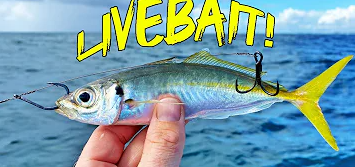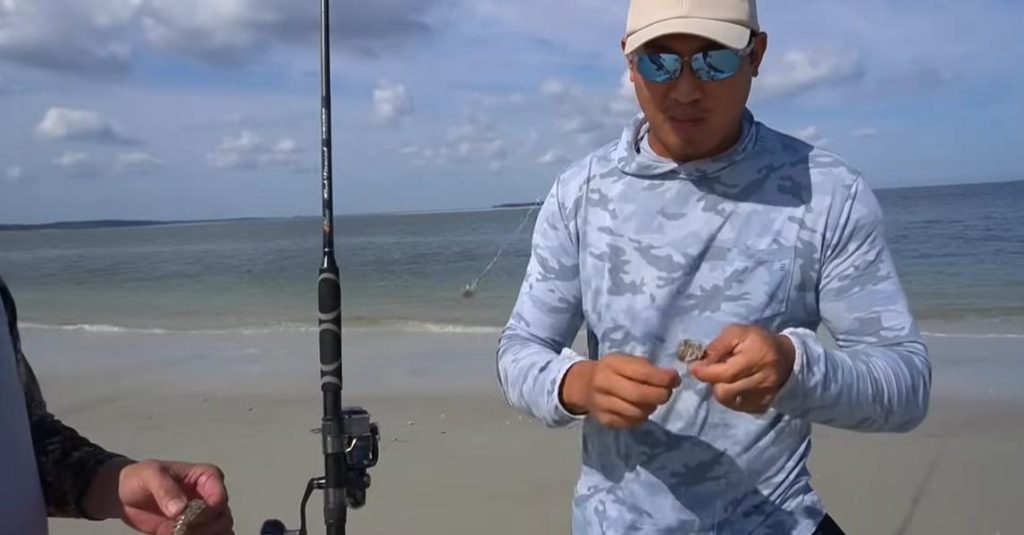To tie bait on a fishing line, thread the line through the bait’s eye or loop, then secure it with your preferred knot. Ensure the knot is tight and trimmed close to the bait for best results.
Securing bait on a fishing line properly is crucial for a successful fishing trip. It’s the difference between landing a big catch and just spending hours by the water. Whether you’re a seasoned angler or a beginner, knowing how to tie bait is a fundamental skill. How to Tie Bait on a Fishing Line?
This guide will help you master the technique, enhancing your fishing efficiency and ensuring that your bait stays on the hook. With clear, concise instructions, you’ll be on your way to making that big catch in no time. Remember, the right knot can make all the difference between a story of the one that got away and the one you bring home.

Selecting The Right Fishing Line
Choosing the right fishing line is pivotal for successful angling. It’s not just about the line’s strength but understanding the nuances of various types.
Understanding Strength: Determining the strength depends on factors like the targeted fish species, fishing technique, and the environment. Consider the pound test of the line. For heavier fish, opt for a higher pound test, ensuring it can handle the weight without snapping.
Popular Types of Fishing Lines: Monofilament, fluorocarbon, and braided lines dominate the market. Monofilament offers versatility, fluorocarbon provides invisibility in water, and braided lines offer strength and sensitivity.
Best Line for Beginners: For beginners, monofilament is recommended. Its forgiving nature and ease of handling make it a great starting point. Start with a line around 8-12 pounds for a balance between strength and manageability.
Factors Influencing Choice: Consider depth control, rod action, and the fishing environment when selecting your line. Fluorocarbon suits deeper fishing due to its sink rate, while braided lines excel in heavy cover areas.
Understanding the distinctions between these lines allows you to make an informed decision, enhancing your fishing experience.

Monofilament Vs. Braided Lines
| Monofilament | Braided |
|---|---|
| Offers stretch that can absorb shock | Minimal stretch for better hook setting |
| Better for topwater baits | Suits deepwater and heavy cover |
| Less visible underwater | More visible, possibly spooking fish |
| Typically more affordable | Greater durability and longevity |
Matching Line Strength To Bait Type
- Light baits – Use thinner, lighter lines for subtlety and finesse.
- Heavier baits – Opt for thicker, stronger lines to handle the extra weight and drag.
- Topwater lures – Float better with buoyant monofilament lines.
- Jigs and crankbaits – Braided lines with higher sensitivity are ideal for detecting bites.
Every bait demands a specific line strength to perform at its best. Light baits require a sensitive touch provided by a finer line, allowing them to move naturally in the water. On the other hand, heftier baits need a line that can endure the extra strain without compromising performance. When fishing with topwater lures, use a line that floats, like monofilament, to keep your presentation on point. For lures that demand a direct connection, like jigs and crankbaits, braided lines grant the sensitivity needed to feel even the faintest tug.
Types Of Bait And Their Appropriate Techniques
When you’re ready to cast your line and reel in the big one, choosing the right bait and knowing how to tie it on correctly can significantly improve your odds. Anglers can select from a variety of bait options, each necessitating a different technique to secure effectively. Below, explore how to maximize the potential of live bait, artificial lures, and cut bait by understanding the nuances of tying each onto your fishing line.
Live Bait

- Hooking through the lip: Perfect for fish like minnows, it allows for natural movement.
- Back hooking: Best for larger live bait, keeping it active for longer periods.
Artificial Lures

- Improved Clinch Knot: A reliable knot for its strength and simplicity.
- Palomar Knot: An excellent choice for a firm hold and easy tying process.
With artificial lures, regular checks for wear and tear ensure your presentation is always optimal.
Using Cut Bait
| Technique | Recommended For |
|---|---|
| Hooking Through the Skin | Ensuring the hook stays secured to tougher bait pieces. |
| Hooking Multiple Pieces | For a more enticing presentation, potentially attracting larger fish. |
Understanding The Improved Clinch Knot
Master the art of securing bait on your line with the Improved Clinch Knot, a must-know for anglers. This dependable knot provides a strong hold, ensuring your lure stays put during casting and retrieval.
Tying Bait For Different Fishing Techniques
Mastering the art of securing bait on a fishing line ensures a successful catch across diverse angling methods. Discover the tricks to adeptly attach various baits for an array of fishing styles, amplifying your chances of reeling in the big one.
Tying Bait For Casting
- Make a simple overhand knot in the fishing line, leaving a loop.
- Pass the end of the line through the eye of the hook or lure.
- Bring the end back to the loop of the overhand knot.
- Wrap the line around itself 3-4 times and then thread the end through the overhand loop again.
- Pull the knot tight, adjusting the loop size before securing it.
Tying Bait For Bottom Fishing
- Thread the line through the hook eye and, double it back, making a loop where it overlaps with the standing line.
- Hold the overlap area between thumb and forefinger, and use your free hand to make 5-10 wraps around both the hook shank and both lines.
- Pass the end of the line back through the loop and pull both ends to tighten.
- Wrap the loose end around the main line several times and pass it back through the loop once more.
- Tighten the knot by pulling on both the free end and the standing line.
Overlooking Bait Size And Type
Selecting the right bait size and type is crucial when securing it to your fishing line. Mastering bait attachment techniques can lead to more successful catches, enhancing your fishing experience.
The Importance Of Matching Bait To Target Fish
Including a table to visually break down the recommended bait sizes for common target fish species
| Species | Preferred Bait Size | Recommended Bait Types |
|---|---|---|
| Trout | Small to Medium | Insects, Worms, Small Fish |
| Bass | Medium to Large | Crayfish, Minnows, Frogs |
| Walleye | Medium | Worms, Leeches, Minnows |
Providing more insights in an ordered list reveals the step-by-step reasoning to adjust bait as per fish species
Incorrect Knot Tying Techniques

Mastering the art of bait attachment is crucial for successful fishing, yet common errors in knot tying can lead to disappointing results. Ensuring strong, secure knots means less chance of losing bait to savvy fish or swift currents.
Risks Of Slippage And Weakness
- A reduced catch rate
- Lost lures and baits
- Broken lines and potentially losing the fish of a lifetime
Ensuring Knot Tightness And Security
- Thread the line through the hook eye and double back parallel to the standing line.
- Make a simple overhand knot by wrapping the tag end around the doubled line.
- Pull the end of the loop down and pass it over the hook.
- Moisten the line to prevent friction-related damage.
- Pull both the tag end and the standing line to tighten the knot firmly against the hook.
Frequently Asked Questions Of How To Tie Bait On A Fishing Line
How Do You Tie Bait For Fishing?
To tie bait for fishing, select the appropriate hook and thread the bait onto it. Secure the bait with small loops or a bait holder if necessary. Make sure the bait is properly attached so it doesn’t fall off during casting or in water.
How Do You Attach Lures To A Fishing Line?
To attach lures to a fishing line, thread the line through the lure’s eyelet and tie a secure knot, such as the improved clinch knot. Trim the excess line after securing the knot.
What Is The Best Knot For Lure Fishing?
The best knot for lure fishing is the Improved Clinch Knot. It’s strong, easy to tie, and works well with various line types.
How Do You Tie A Secure Knot On A Fishing Line?
Thread the line through the hook’s eye, leaving a tail. Wrap the tail around the standing line five times. Pass the tail back through the loop near the eye, then through the large loop formed. Wet the knot, pull tight, and trim the excess line.
Conclusion
Securing bait properly can make or break your fishing success. With the steps provided, you’ll master the skill swiftly. Remember, patience and practice are your allies in achieving the perfect bait setup. Now, it’s time to cast your line and enjoy the thrill of the catch.

